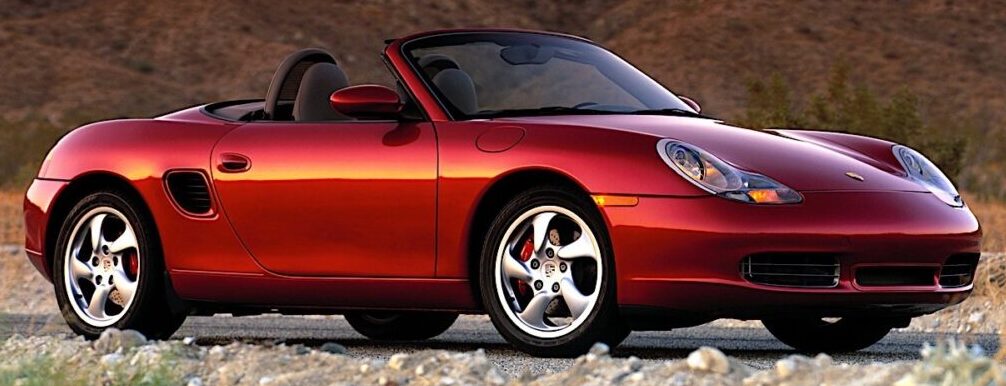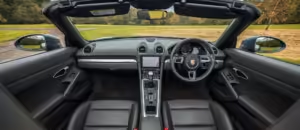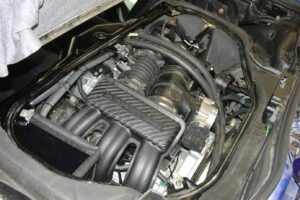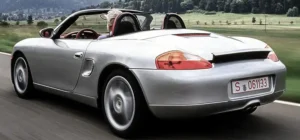Porsche Boxster depreciation trends: A brief analysis
1. The Porsche Boxster: A detailed look at depreciation trends
2. An overview of Porsche Boxster depreciation
3. Porsche Boxster 986: The beginning
4. The 987 series: A mixed bag
5. The 981 generation: Stability amidst fluctuations
6. The 718 series: The modern era
7. Comparative insights: How does the Boxster fare?
8. Conclusion
The Porsche Boxster: A detailed look at depreciation trends
Welcome to our latest market update focusing on the Porsche Boxster. While sports cars from Porsche are renowned for their relatively slow depreciation compared to their competitors, it’s worth investigating whether this trend holds true for the Boxster, especially given its position as the most affordable model in Porsche’s lineup. Do you need to invest in a high-end RS model to avoid depreciation, or does the Boxster also hold its value well? Let’s dive into the data-driven analysis to uncover the current trends.
An overview of Porsche Boxster depreciation
In this article, we will systematically analyze the depreciation trends of the Porsche Boxster, starting with the earliest 986 generation and moving up through the 718. We will assess how these models have performed in the market over the past year and what this could mean for potential buyers and sellers.
Porsche Boxster 986: The beginning
First, let’s explore the 986 generation, which includes both the base and S models. Over the past year, the price trends for these models have shown minimal volatility. Base models have seen a slight decline of 1.9% or approximately $290, while the S models have decreased by 2.7% or about $491. These minor changes are statistically insignificant and could be attributed to chance rather than a clear trend. Overall, the 986 has maintained its value relatively well.
The 987 series: A mixed bag
Moving on to the 987 generation, we again see a mixed picture. For the 987.1 models, base models have experienced a 1.2% drop, equivalent to $260, whereas S models have seen a 3.6% increase or $890. However, these changes are not statistically confirmed due to the wider confidence intervals, indicating high volatility and lower supply.
In the 987.2 market, prices for Spyder and S models have generally been stable or slightly increased since November 2020. Spyder models have appreciated by 4.4%, while S models have seen a 1.8% increase. Conversely, base models have decreased by 6.5%. Despite these figures, the changes are not statistically robust and should be interpreted with caution.
The 981 generation: Stability amidst fluctuations
The 981 Boxster represents a peak in Boxster evolution, and this is reflected in its pricing. Base models have seen a 2.2% increase, while S models have dropped by 3.9%. For the GTS and Spyder variants, there have been notable fluctuations, with GTS models increasing by 5.8% and Spyders by 1%. However, these markets are smaller and subject to greater variability due to limited inventory.
Overall, the 981 remains popular, with over 80% of these cars selling within three months. This high turnover rate indicates strong demand despite the small fluctuations in pricing.
The 718 series: The modern era
The 718 Boxster, introduced as a modern, turbocharged sports car, has also shown interesting trends. Despite initial concerns about the four-cylinder engines, the market response has been relatively stable. Base and S models have experienced decreases of 3.7% and 2.2%, respectively, while the GTS has fallen by 3.6%.
The 718 Spyder and the more exclusive 25 Years Edition have shown more stable or slightly increasing trends. The Spyder, in particular, has rebounded with a 1.8% increase in 2023 after a significant correction in 2022.
Comparative insights: How does the Boxster fare?
When comparing the Boxster to other sports cars, it’s clear that it has outperformed many of its competitors. On average, the Boxster experienced a depreciation of only 0.13% over the past year. This performance places it among the top 25% of sports cars with the least depreciation.
For context, the average sports car under $80k saw a depreciation of 7.5%. Even with the Boxster’s slight adjustments, it remains an attractive option for those looking to minimize depreciation.
Conclusion
In conclusion, the Porsche Boxster demonstrates impressive resilience against depreciation, even at its lower price point compared to higher-end Porsche models like the GT3 RS. Across all generations, the Boxster has shown a notably lower average depreciation rate than many other sports cars on the market.
This trend highlights that you don’t need to invest in a high-end Porsche to benefit from slower depreciation. Whether you are considering a 986, 987, 981, or 718, the Boxster remains a solid choice with a strong value proposition.
Thank you for joining us in this detailed analysis. Stay tuned for more updates and insights into the world of sports cars and their market trends.
Inspired by the analysis of our friend @fourwheeltrader. Make sure you check his other videos https://www.youtube.com/@fourwheeltrader/featured.
Are you already a proud owner of a Porsche Boxster? If so, check out our selection of parts for this car at the following link:
https://octoclassic.com/product-category/porsche/boxster
Photos sources: autoevolution.com, carwow, autocar.co.uk, Pelican Parts











